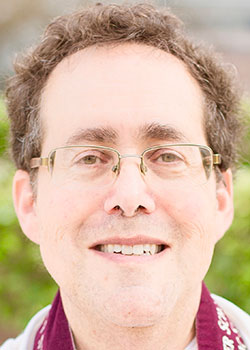Careers of public figures take on a life of their own, ebbing and flowing with shifts in public opinion and the latest values. One Jewish figure whose popularity is at an all-time high is the prophet Miriam, the sister of Moses and Aaron. While featured prominently in the Torah, Miriam's claim to fame always paled in the face of her more visible brothers. After all, Aaron was the first Kohen Gadol, the link between the Jewish people and their religion, and Moses was the intimate friend of God, transmitting sacred teachings to the people.
Compared to those two leaders, Miriam simply faded into the background. True, we celebrate her beautiful song at the shores of the Red Sea, but even that poem is overshadowed by Moses' far-lengthier song. Today, Miriam's fame rests less on any specific accomplishment and more on the fact that she was a woman.
Three thousand years ago -- and in most parts of the world even today -- being a woman is itself disqualification from public recognition or accomplishment. With so few female heroes, Miriam stands out precisely because we are now more sensitive to just how difficult it is for a woman to gain public recognition. Today's 'parshah' comments on the death of this prophet, that "Miriam died there and was buried there, and the community was without water."
Rashi (11th Century, France) noticed the strange juxtaposition of Miriam's death and the shortage of water, and assumed that there must be a connection between the two. "From this we learn that all forty years, they had a well because of the merit of Miriam." Miriam's Well entered the realm of Midrash as testimony to the greatness of this unique leader.
As the Jews wandered through the wilderness, lacking adequate water would have been fatal. However, the power of Miriam's integrity, piety and caring was such that God provided a moving well of water, one which followed the people throughout their wanderings until the moment of her death. Without Miriam, there was no more water.
Miriam's place in Jewish legend points to two lessons we can carry with us through our own personal wildernesses. While male prophets emphasize the power of words, the centrality of rules of conduct, of sanctity and of justice, Miriam's prophecy was one of deed. Rather than stirring speeches or administration of justice, Miriam focused on teaching her people how to sing in moments of joy, and she saw to their sustenance during their period of exposure and fragility.
Miriam's example, paralleled by countless women after her, is one of action -- deeds of love and support. Without Miriam's efforts, no one would have been able to listen to the words of Moses or to study God's Torah. Acts of caring and love -- that is the special gift that women give humanity. Notice, also, that no one comments on her well, on how important and valued her contribution is until after she has died.
The tragic reality is that for most women, after-the-fact recognition is often the only kind that is given. The women who work in the homes raising children, the women who work in the schools teaching students, the women who work in hospitals tending the sick, these and countless other women perform the difficult, tedious tasks that sustain and make human life possible.
While medallions and press releases accompany the splashier achievements of some men, many women quietly provide wells of nurturing and support without public attention or commendation. Only when they are no longer able to serve are their services noticed, and then only because they are missed. Why didn't anyone notice Miriam's well while she was still alive? It may be too late to change Miriam's status among her own generation, although many Jewish men and women are now, belatedly, giving her the prominence that her compassion and nurturing deserve. But it is not too late for our generation to re-examine its own values and heroes today.
Do we sufficiently honor those whose contribution is quiet support of others? Do we still relegate such vital care to one specific group, or have we each undertaken to make ourselves not only disciples of Aaron, not only children of Moses, but also personifications of Miriam -- using our hands and hearts, just as she did, to irrigate the lives of our people and of all people?
Shabbat Shalom

